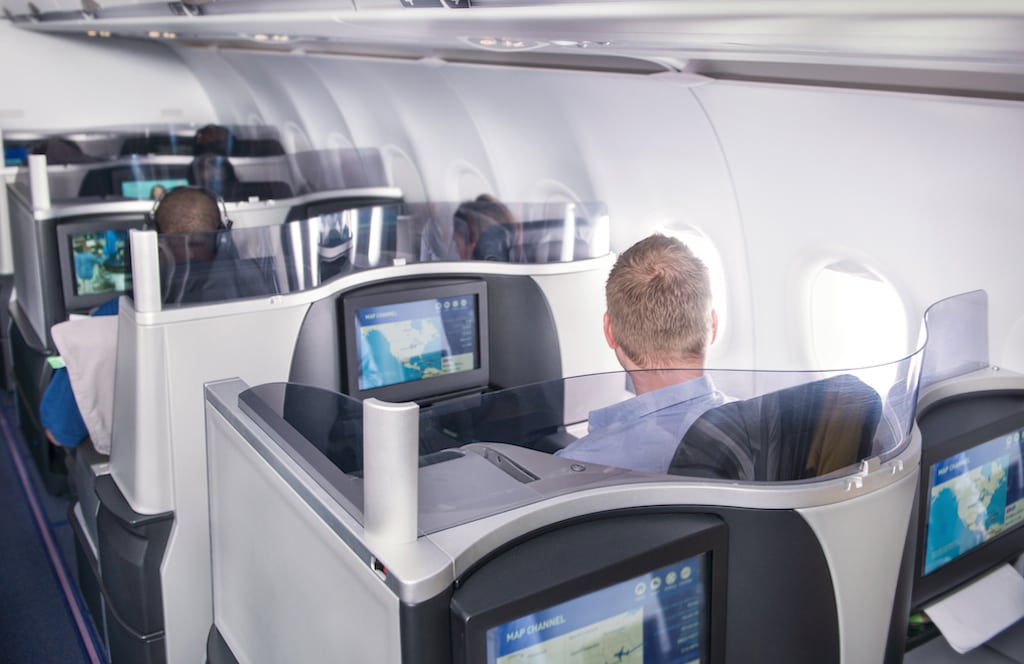Skift Take
JetBlue's changes are all part of the evolution of JetBlue from a low cost carrier to one that navigates a middle ground between Spirit and Southwest, one the one hand, and American, United and Delta, on the other, all in the name of maximizing profit and pleasing Wall Street.
JetBlue is getting a lot more complicated as the discount airline grows up.
JetBlue president Robin Hayes, who will soon take over the CEO reigns from David Barger, said today that the airline will unveil three fare families — where passengers can choose which features they want or don’t want included in the ticket price — in the second quarter. It is already being tested, he added.
The three bundles of fares will include one fare type geared for passengers who don’t intend to check a bag.
That’s code for JetBlue beginning for the first time to charge bag fees for the first checked bag for some of its tickets.
Hayes didn’t reveal any pricing related to bag fees or the detailed characteristics of the new fares, but said JetBlue expects they would generate $200 million annually by 2017.
The airline, which debuted business class Mint service on select long-haul flights last year, can expect a backlash when it starts charging for the first checked bags in coach, or its “core” seats, as JetBlue likes to spin it.
Even More Seats
If the addition of three new fare types with bundles of features isn’t complicated enough, Hayes said JetBlue’s Even More seats, which offer extra legroom (38 inches of pitch), expedited security and priority dibs at overhead bin space, is now subject to variable pricing not only by flight — but also by the positioning of individual seats in the aircraft.
JetBlue’s website currently states that an Even More seat “starts” at $10 one-way, depending on the flight, but that verbiage is out of date as the price now actually depends on the flight and the seat position.
This sort of “dynamic pricing” can be great for airlines trying to squeeze maximum ancillary revenue out of a preferred seat, but it can be maddening for travelers trying to figure out how much they are going to pay for upcoming flights.
JetBlue generated about $25 per passenger, a 3 percent increase in the fourth quarter, from this sort of optional revenue, including fees for second bags and Even More seats.
These changes are all part of the evolution of JetBlue from a low cost carrier to one that navigates a middle group between Spirit and Southwest, one the one hand, and American, United and Delta, on the other, all in the name of maximizing profit and pleasing Wall Street.
Fly-Fi
Hayes said JetBlue’s installation of high-bandwidth Wi-Fi, which the airline calls Fly-Fi, is on track. The Wi-Fi is installed in 100 of JetBlue’s 130 Airbus 320 aircraft, and comes installed as JetBlue takes delivery of Airbus 321s.
JetBlue’s fleet of Embraer 190s are slated to begin to get Fly-Fi later in 2015.
Hayes said it is not uncommon to see 80 to 100 passengers on a flight using its souped up Wi-Fi service.
No Merger Fervor
Asked whether JetBlue sees a merger with another airline in its future, Hayes said Jetblue is “still very committed to our organic growth plan.”
Said Hayes: “There’s no change in our focus of building this company one airplane at a time.”
And one seat at a time, apparently.
The Daily Newsletter
Our daily coverage of the global travel industry. Written by editors and analysts from across Skift’s brands.
Have a confidential tip for Skift? Get in touch
Tags: airline seats, fees, jetblue airways
Photo credit: From bag fees to new fare types and the changing pricing of seats with extra legroom, JetBlue is becoming more complicated for passengers. Pictured, while passengers in JetBlue's premium Mint service seats remain comfy, coach passengers on the airline's A320s will get 1.6 inches of reduced seat pitch starting in 2016. JetBlue JetBlue
